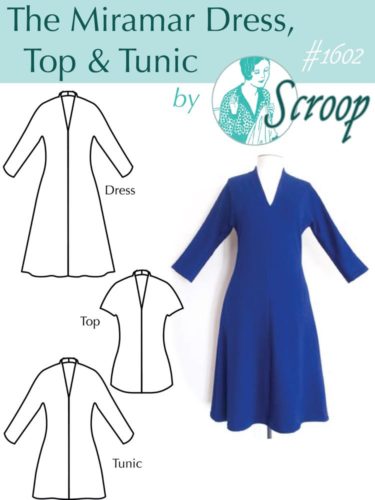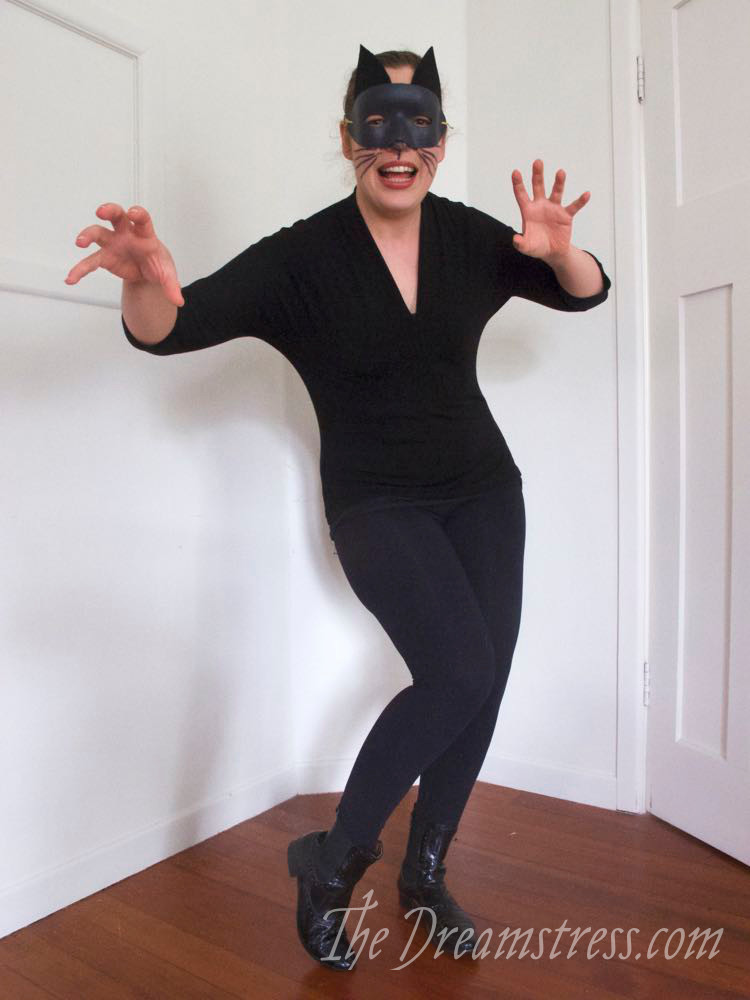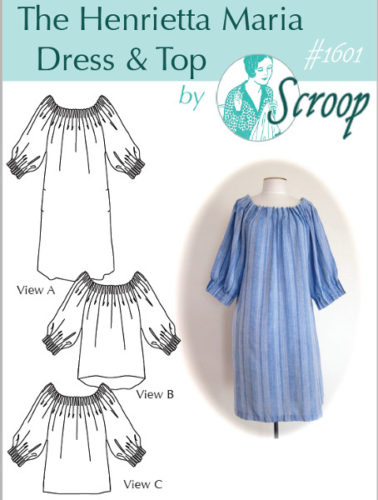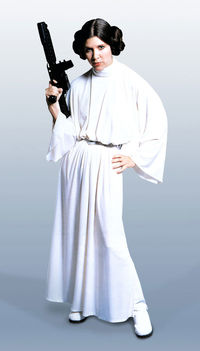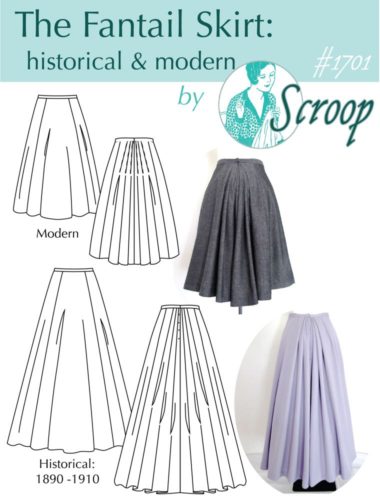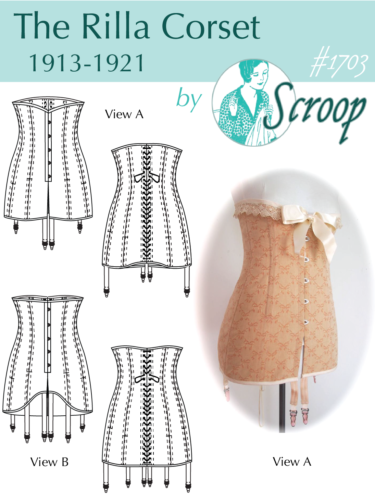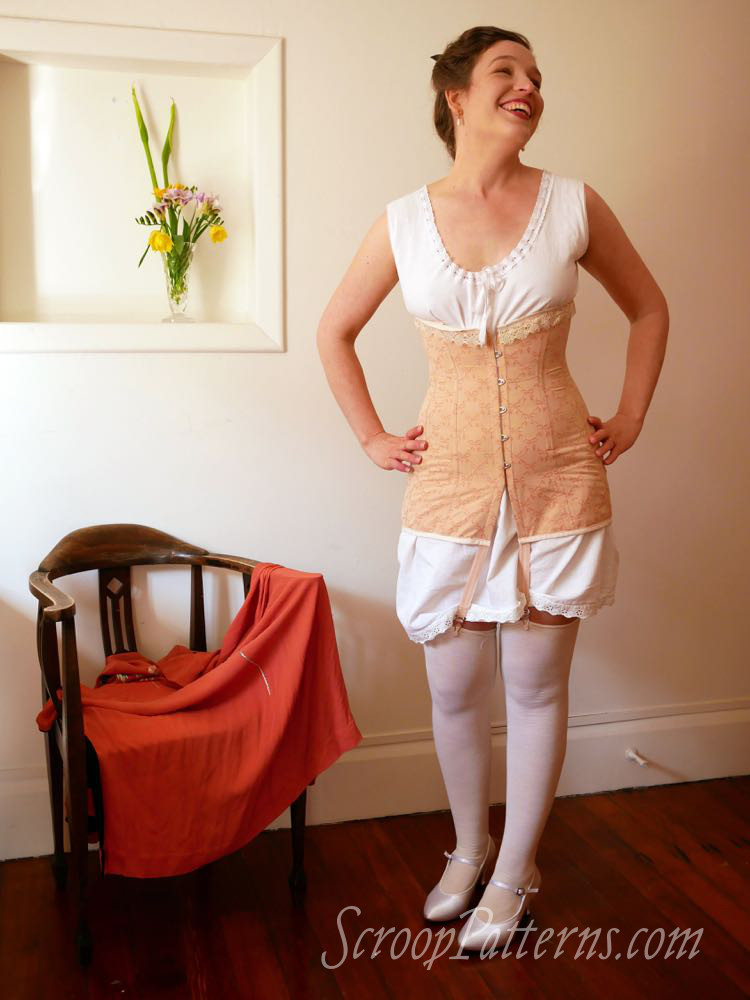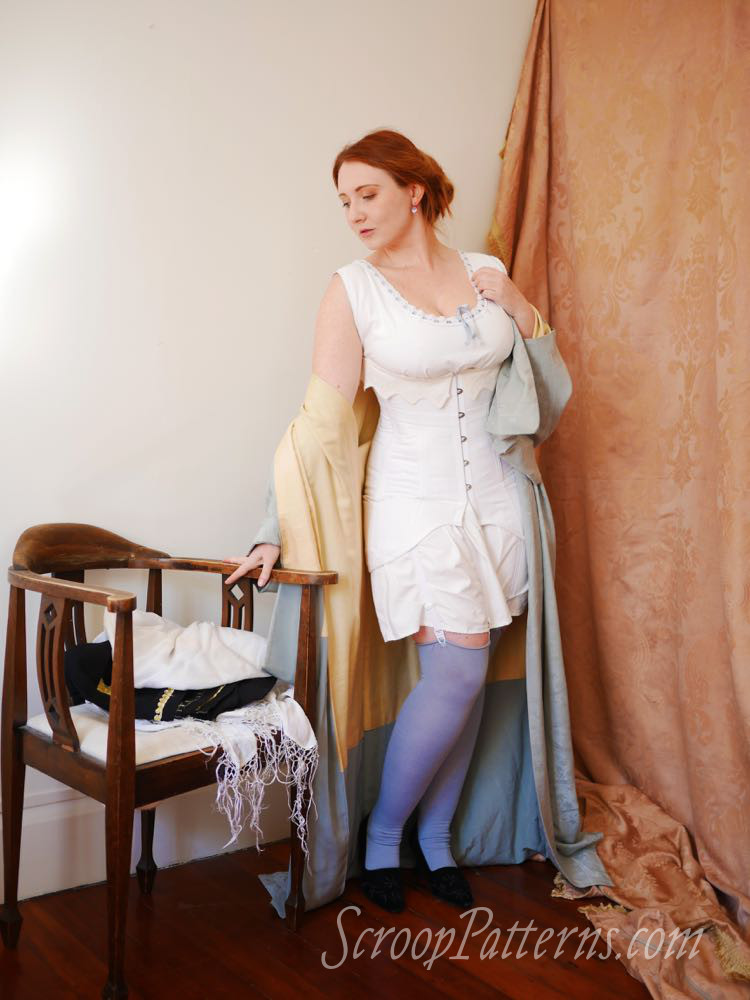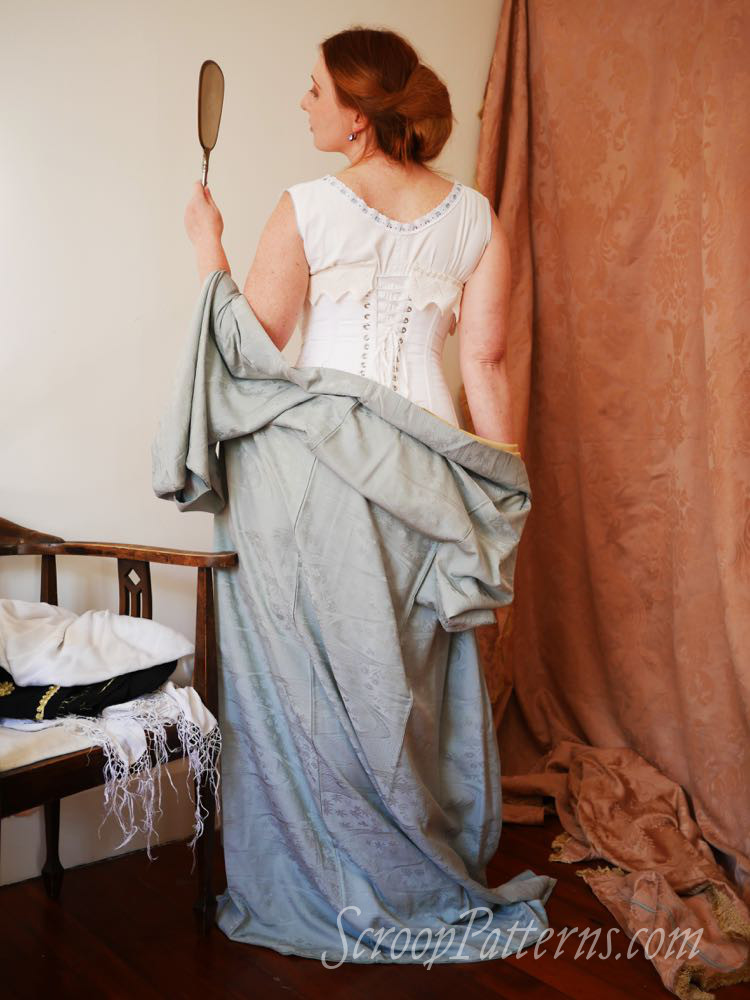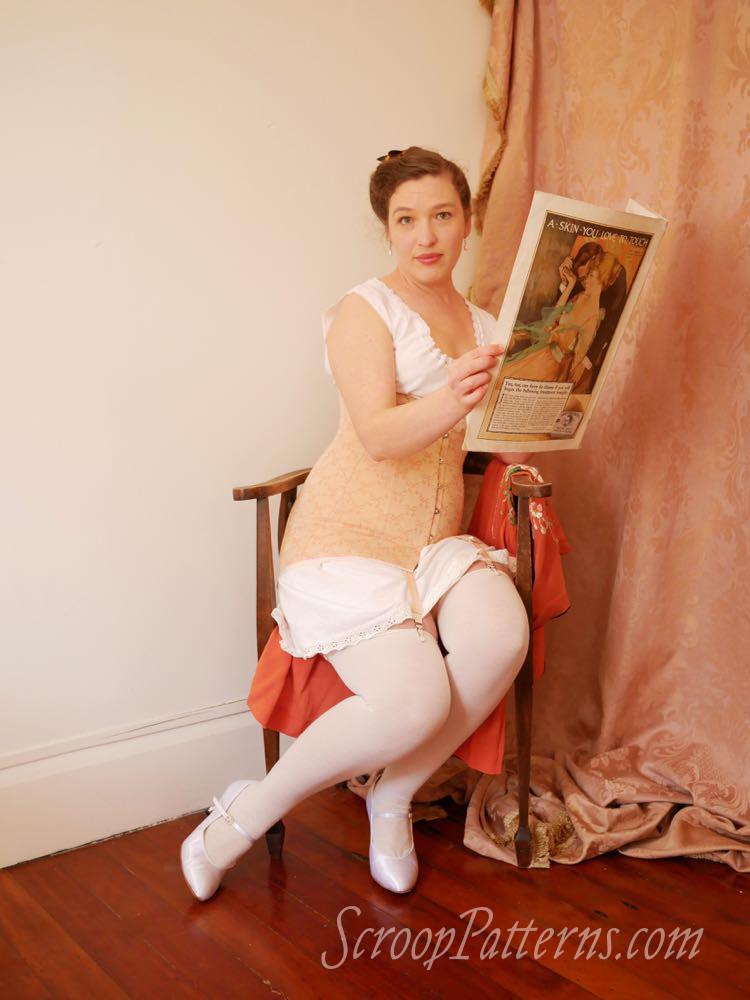I LOVE Halloween. How could I not? It’s a holiday all about dressing up!
I love going all out with Halloween costumes, but I equally love taking ‘everyday’ clothes and sewing patterns and turning them into a costume. There is something really fun and clever about turning a simple thing into something wacky and fabulous with a bit of creativity (remember my circular cardigan Jedi?)
In celebration of this concept, we’ve been brainstorming all sorts of fun costumes you could make from Scroop Patterns.
The Miramar Dress, Top & Tunic
We had to restrain ourself with ideas of costumes that could be made with the Miramar as a base. There are SO many.
Make it floor length in black, add a hat and a broom, and you’re a witch!
Or, a dangling girdle belt, and you’re a medieval maiden.
Many stretch velvets have the right amount of stretch for the Miramar too. Dark red stretch velvet? You’re Mother Gothel! Pale turquoise with a chiffon cape? Elsa! Dark blue? Arwen!
But you don’t have to go full length with the Miramar to have a cool costume. The Curvy Sewing Collective suggested it would be a good base as a Catwoman costume, and we thought the idea was so fun we had an impromptu Catwoman photoshoot.
This really is as impromptu as you can get! I pulled out a black Miramar top, leggings from my favourite legging pattern, cut a quick pair of ears out of some black fabric, stiffened them with interfacing and cellotaped them to a black mask, and we used watercolours to paint my face because I didn’t have any suitable facepaint. Five minute costume for the win!
The cut-on sleeves of the Miramar give it a very 1950s-60s flair which is just so perfect for Catwoman.
The Henrietta Maria Dress & Top
What can you do with the Henrietta Maria?
I got a bunch of suggestions of a Dorothy blouse, with a blue gingham pinafore dress over it, and what do you know, Ciara has already done a delightful Dorothy-esque outfit with the Henrietta Maria over on the Monthly Stitch!
In white, the HM would also be a great pirate shirt – those big puffy sleeves! Arrrrrr matey! (which reminds me how much I want to sew a white HM for myself).
Or, what about a full length Henrietta Maria, in white jersey, with the bottom of the sleeves left loose, as a Princess Leia?
The Fantail Skirt
The Fantail is an obvious choice for all sorts of 1900s-esque costumes: add red hair and you’re Anne of Green Gables; a white blouse, daisy trimmed hat, and red bow tie, and you’re Mary Poppins.
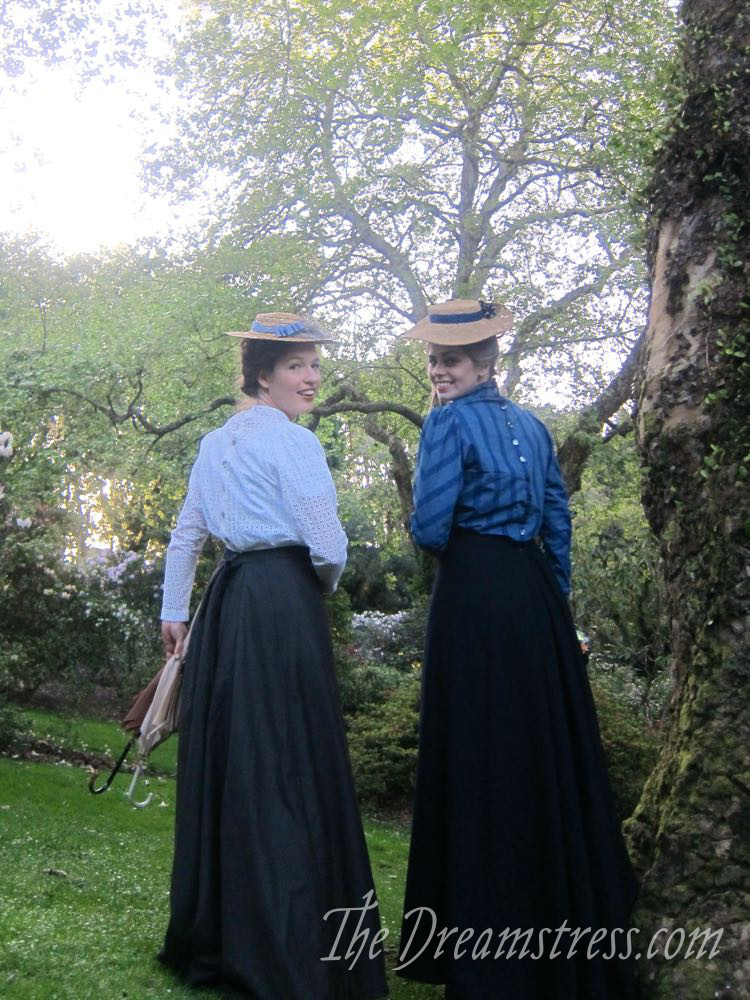 We got a little over-excited brainstorming Fantail ideas, and started debating dividing the back panels into multiple panels, to make a rainbow, with each pleat in a different shade. It would be amazing to see if you tried it!
We got a little over-excited brainstorming Fantail ideas, and started debating dividing the back panels into multiple panels, to make a rainbow, with each pleat in a different shade. It would be amazing to see if you tried it!
The Rilla Corset
You know what I would REALLY love to see someone do with the Rilla? I’d LOVE to see a 1910s period-accurate Wonderwoman corset. Something with a red chemise and blue drawers, and gold binding and trim… I think it’s do-able, and would be amazing! Whose game?
I’m sure there are lots more costumes that could be made from Scroop Patterns! What else can you think of?
Whatever you’re doing for Halloween, happy costuming!


